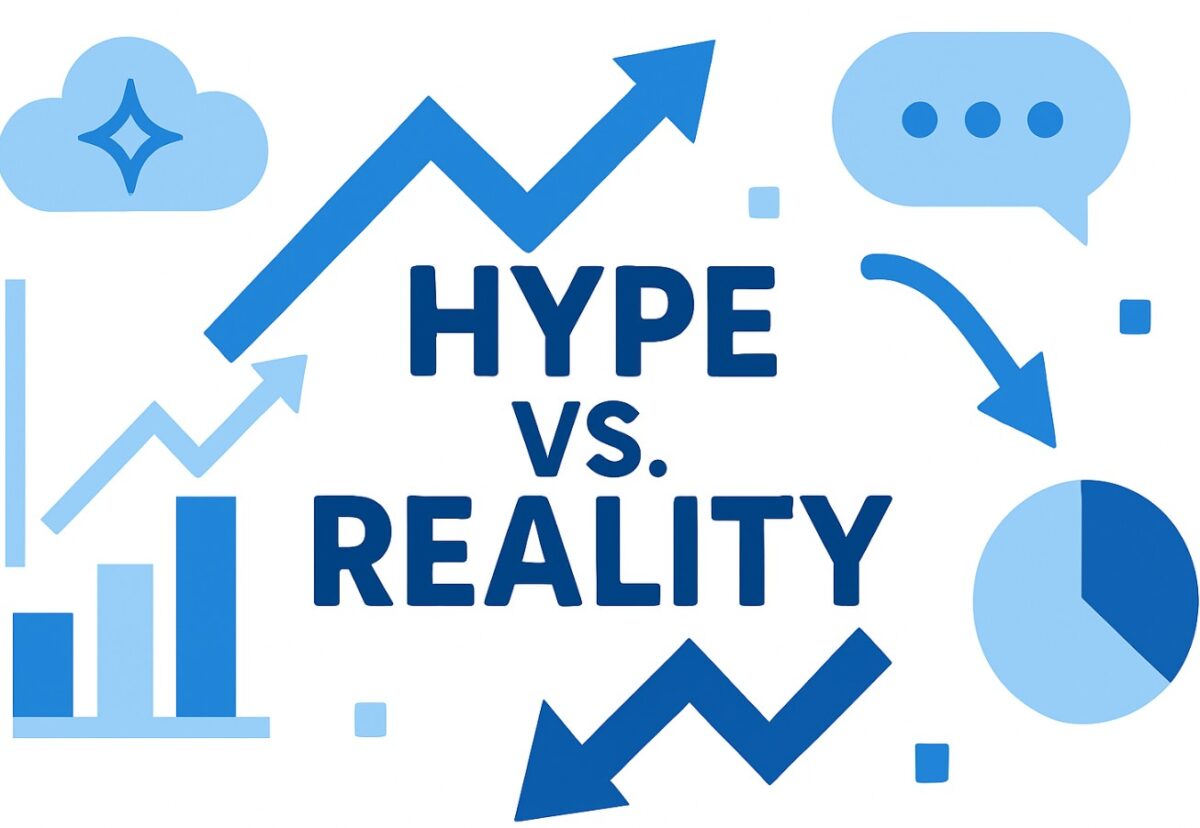Let’s talk about the Google Gemini 3.0 Pro model
I have several days of intensive testing behind me, during which I integrated the model into my daily workflow. From my previous Linkedin post, it might have looked like I was skeptical about the new model or that it wasn’t good. I would like to set the record straight: It is a really good model.
However, with the “hype” Google had been building for roughly 5 months before the release, I personally expected a revolution. We “only” got a great evolution. Let’s look at the details in individual categories.
We “only” got a great evolution. Let’s look at the details in individual categories.
I believe, however, that for many it will be a revolution, simply because they don’t constantly try out all the new models. So, the difference between their older experience and the experience with Gemini 3.0 Pro will be greater.
Chapter 1: The trap of diminishing returns in “smartness”
The model is truly smart. There is no dispute about that.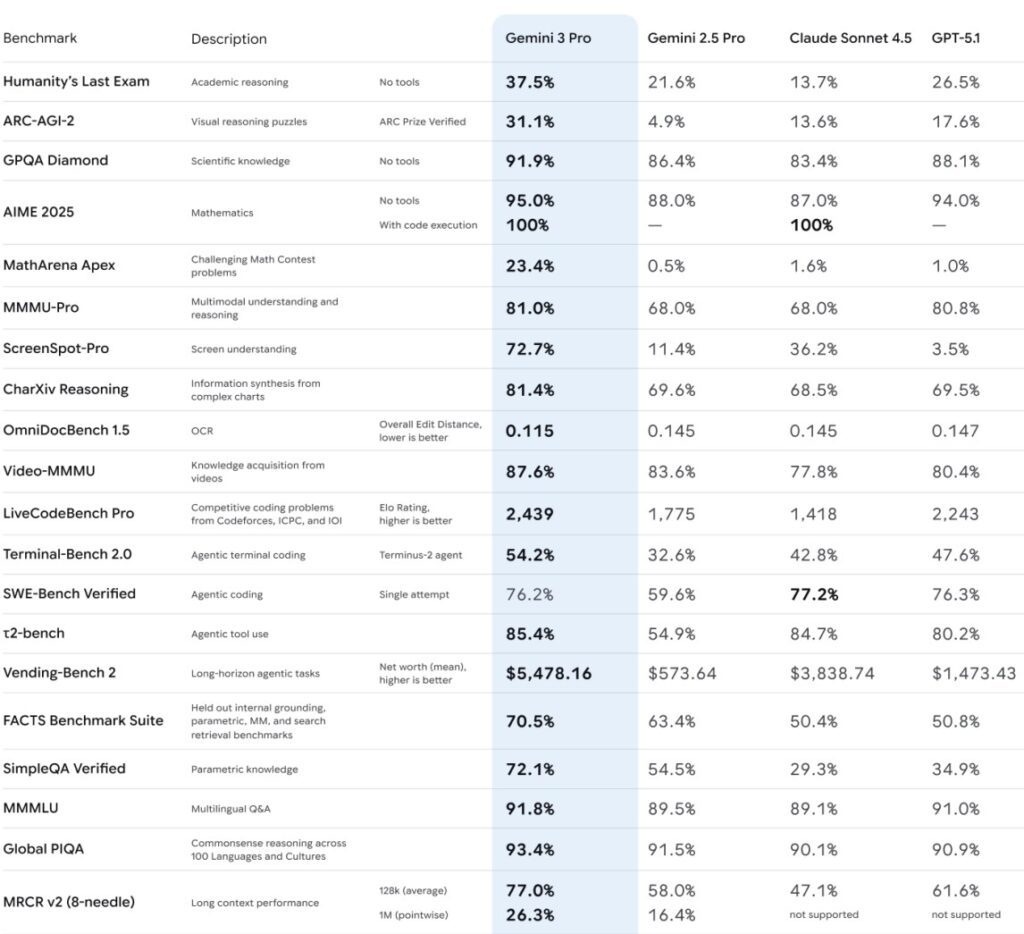
The problem is that generally, even competing models are so advanced in “smartness” today that for common queries, the differences blur. We are long past the era of the jump between GPT-3 and GPT-4. Today, the difference between Gemini 3.0, reasoning in GPT-5.1, and other models requires a magnifying glass to find. We have practically reached a state where all models answer 90% of basic questions asked by a normal user more or less equally well.
So where is the difference?
It is only in those remaining few percent of “edge cases”. These are situations where you utilize the full potential of reasoning models, i.e., moments when you let the model perform calculations, verify steps, and formulate the final answer for 20–30 minutes.
Here we encounter a paradox: As the model gets above a certain level of smartness, the average user feels it less and less. You simply don’t need Einstein to write an email, summarize text, or come up with a dinner idea; a capable assistant is enough. And everyone has that by now.
PS: Turning off internet access for Gemini 3.0 Pro makes the model dumber. Which can be observed, for example, with the seahorse emoji.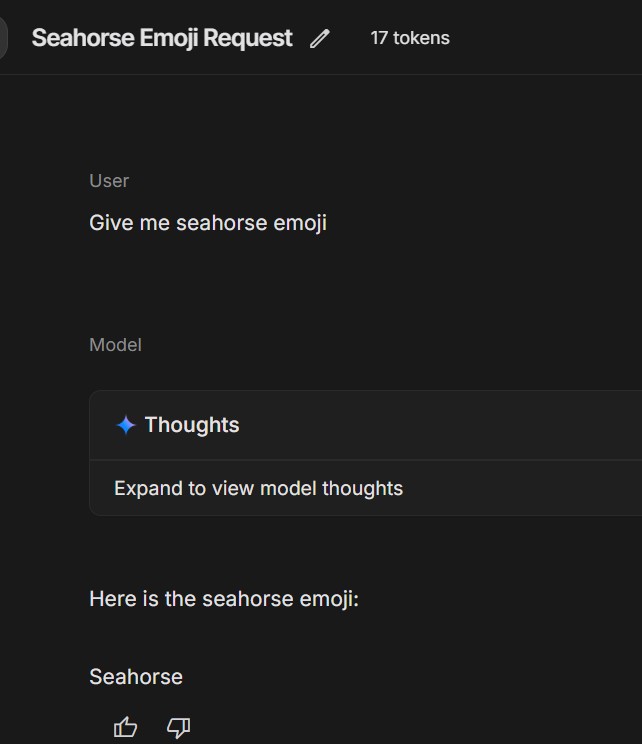
Chapter 2: A visual revolution I won’t (really) use
I see the main innovation in Gemini 3.0 Pro (Nano Banana Pro) as being the exponentially better work with images and multimodality in general. Google has done a tremendous amount of work here. This capability allowed the model to achieve absolutely great scores in many synthetic benchmarks, and it currently dominates in image processing. It definitely deserves praise here.
On the other hand, I have to be honest, it is something I personally almost never use in my practice. I work with text, code, and data. For text-oriented users, however, it is a “nice-to-have” feature that doesn’t change the rules of the game.
If you then don’t utilize this advantage with images, then the benchmarks focused on text didn’t look so astronomical.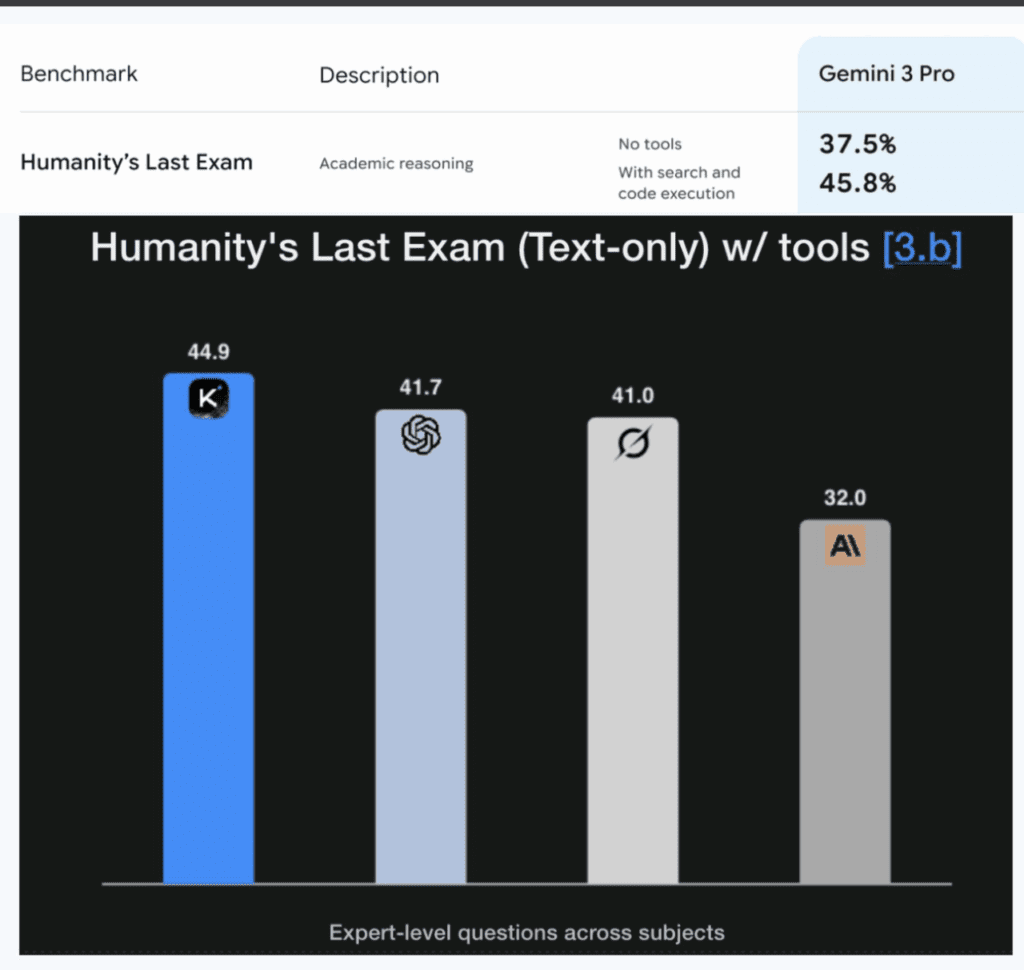
PS: Nano Banana Pro is only for paying users or via the standard paid API.
Chapter 3: Speed and brevity as a key advantage
What I like most about this model and why I turn it on more often now is speed.
Gemini 3.0 Pro can answer roughly twice as fast (My feeling, mainly the initial lag before it starts typing) as the competing GPT-5.1 Thinking Extended. And it’s not just about latency. It must be said that Gemini writes shorter answers and gets more to the point.
In this context, I am already impatiently looking forward to Google Gemini 3.0 Flash. Which I can easily put on a shortcut just like GPT5.1 Instant and will simply trigger with a click. I’m also waiting for the Flash version because of the price, as Gemini 3.0 Pro is not cheap at all to run via API.
Chapter 4: Programming, Google has caught up
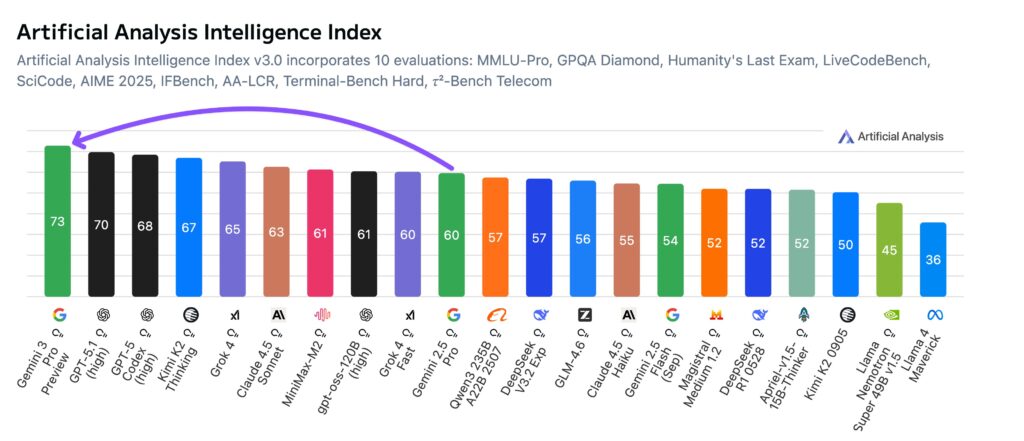
An area where “smartness” can still be objectively scaled and measured is programming. Here I feel that it is finally on par, where Google has caught up with OpenAI and Anthropic.
What I like:
- 1M token window, still a big plus for that. Which Gemini 2 could already do.
- Some one-shots of entire programs are impressive.
- For Windsurf / VS code named Antigravity. There are free limits here and I am testing it. Google wins here on the fact that it is simply free, sometimes it has bugs, but for that price, it’s super. Limit reset is every 5 hours. You can run a bunch of agents in parallel and waste the limits in 10 mins 😀 .
What I don’t like:
- They haven’t released Gemini CLI with free limits for Gemini 3.0 Pro yet, so far only for people with a Gemini Ultra subscription.
- It’s expensive, let’s hope the price of the Flash version will be more reasonable.
Google was behind in coding for a long time, but with version 3.0 Pro it has caught up and perhaps slightly surpassed the current standard.
However, the situation is dynamic:
- OpenAI has announced GPT-5 Pro, which seems a bit smarter, but it isn’t available in the API for mass testing yet.
- The same applies to the specialized Codex Max.
- Anthropic will certainly counter with a new Claude model soon.
However, for developers, Gemini 3.0 Pro is currently a valid choice for testing, but from what I’ve discussed with other developers, they don’t intend to leave Claude. Although they also say that as Anthropic cuts down even paid limits, they are somewhat forced to try other variants too. I typically jump between different CLIs and coding UIs as needed and don’t try to use just one tool, but all of them and only for what those specific tools are good at. I will have to test even more here; I’m kind of waiting for the Gemini CLI with this model.
Chapter 5: Hallucinations and AI SEO (Sad reality)
Since I deal a lot with AI traffic and search engine optimization (GEO/AIO), my secret wish was a significant improvement in the area of hallucinations and work with sources.
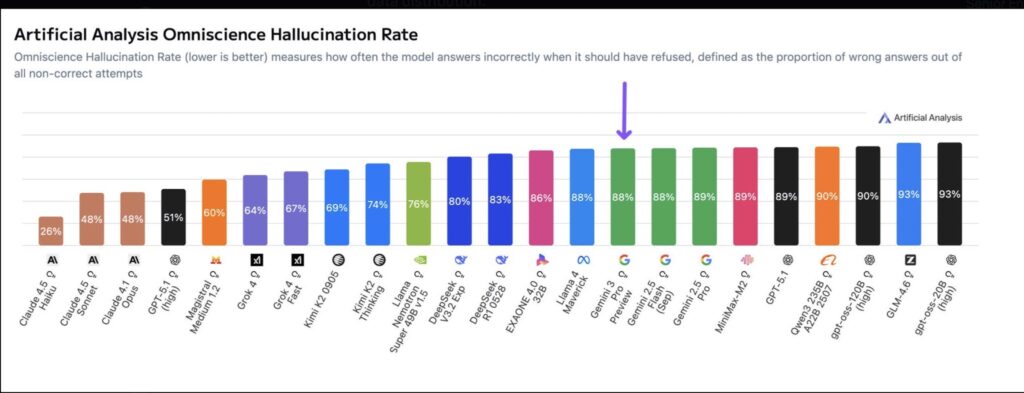
Unfortunately, I know that this hasn’t improved as much as we needed. And I dare say that next year it will likely be the same. Language models still tend to “make things up” rather than “know”.
One fundamental fact for the Czech market follows from this: AI answers in Google search (SERP) will still be suboptimal for the Czech Republic. If the model hallucinates or misquotes (Czech) sources, users will not gain trust in these summaries. This is a big problem for me personally.
Gemini 3.0 Pro is not yet in search in the Czech Republic. So far, it is available only in the US, only for selected users, and is for people with a Gemini Ultra subscription ($200/month).
Conclusion
The Google Gemini 3.0 Pro model is a great tool, mainly if you are looking for speed and brevity. But it is not the “AGI” that marketing promised us.
PS: Am I quitting ChatGPT? No. It’s just that Google AI Studio with Gemini 3.0 Pro will be added back to my pile of models that I use.
How do you see it? Have you tried the new Gemini 3.0 Pro for coding or working with images yet? Write your opinions in the comments on social networks!
